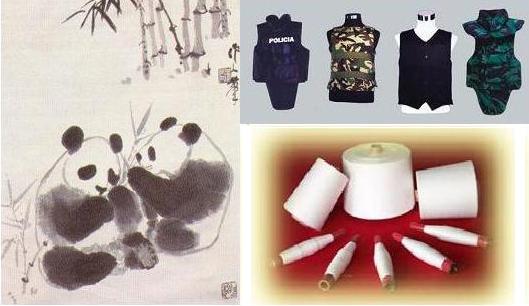
当前课程知识点:Culture and Tourism > Week 4: Cultural Landscapes: Meanings, Values, Assessment, Documentation > 4.1 Introduction of the Meaning of 'landscape’ > 4.1.2 The conceptual framework of cultural landscape
返回《Culture and Tourism》慕课在线视频课程列表
返回《Culture and Tourism》慕课在线视频列表
下来是第二节
这是我所讨论的概念框架
即学术背景
其中包含许多子部分
那么让我们先来问一个问题
什么是文化景观
而对价值观 意义和文化传承过程的考察
最基本的是景观这个词本身
然后是联结
它和 文化 这个词结合在一起
赋予我们文化景观
这是为什么呢
在我看来
我三年前写的一篇文章有涉及到
它与景观的文化概念有关
那就是理解我们最深层的需求之一是认同感和归属感
而在这方面的共同点是人类对景观的依恋
以及我们如何在景观和地方中找到认同感
文化景观研究与公共历史举动
和日常景观的不断扩大是一致的
对景观的概念的理解反映了平凡的日常生活方式
迫使人们创造场所的意识形态
以及随着时间的流逝的生活节奏或节奏
这些故事讲述了人们 事件和地点随时间的变化
它们提供了一种连续感
一种几年前一位作者所说的时间流的感觉
它们还提供了范围更广的概念
和对文化遗产 纪念碑和遗址的理解
因此 文化景观概念旨在提高人们对遗产地
不是孤立的岛屿或地图上所谓的点的认识
人 人的社会结构和生态系统以及景观保护之间是相互依存的
正如我刚才给你的这句话所暗示的
文化景观和现代文化遗产思想之间存在着联系
我认为研究文化景观的定义是有用的
研究者有很多 但我要提到的是Peter Fowler
几年前他所写的一篇文章
有一个相当神秘的标题 文化景观 可怕的短语 伟大的概念
他在批评 文化景观 这个词
我在下面给出的定义和引用是因为它很简洁
特别是 我发现它在理论上和专业上都是可行的
让我们快速看一下这个定义
文化景观反映了人与自然环境在时空上的相互作用
在这种背景下
自然是人类社会的对应物
两者都是动态的 是动态的力量
塑造着景观
文化景观是一种具有有形和无形特征的复杂现象
无形的组成部分来自于观念和相互作用
这些观念和相互作用对景观的感知和塑造产生影响
例如与景观密切相关的神圣信仰
以及随着时间的推移人们对景观的感知方式
这也许是最重要的传感器
文化景观反映了创造它们的文化
这个定义源自1993年联合国教科文组织
在德国举行的国际会议上的讨论
我很高兴参加了这次会议
当时我们正在讨论1992年出于世界遗产的目的而宣布的三类文化景观
此处显示的这些类别是在80年代和90年代初
人们对文化和景观概念日益增长的兴趣基础上发展起来的
并随着它的发展势头
渗透或联系到文化遗产管理和规划的理论和实践中
因此 出于世界遗产的目的
我们拥有三种文化景观
明确定义的景观是由人设计和有意创造的
在这里 我将以中国和日本的著名花园为例进行介绍
第二种是有机进化的景观
分为不同的类别
其中一种是遗迹或化石景观
在这种景观中
进化过程已经结束
但其特征仍然可见
这是中东的一个例子
是叙利亚一个被列入世界遗产名录的地区
被呼吁 现在访问
以荒芜村庄而知名
但是 最普遍的景观类型是在不断演变的景观中继续存在的第二种景观
它在与传统生活方式相关的当代社会中仍扮演着积极的社会角色
并且演化过程仍在进行中
以及这种重要的物质证据是否表明其随着时间的推移而进化
而第三类联想性文化景观则是
通过自然元素的强大宗教 艺术或文化联想
而非物质文化证据来证明的
在这里 我使用澳大利亚著名的例子乌鲁鲁
乌鲁鲁所在的土著地 并与土著艺术的点画
其中的点画将代表景观
这就像从平面窗口向下俯瞰风景一样
他们对1990年代运动的批评是
1960年代和1970年代文化地理学家的学术著作
例如David Lowenthal Peirce Lewis Donald Manning
J·B Jackson以及他在美国日常生活中无与伦比的论文
英国的Dennis Cosgrove和澳大利亚的J·N Jennings
他们建立在19世纪后期的德国传统中
一名叫Otto Shooter的人
他也是地理学家
他创造了 文化发射器 一词
这是文化景观的德语
在这里他看到了景观形态
那里的景观形状是文化的结果
是文化的产物
大约在同一时间
还有另一个德国人
既是人类学家又是地理学家Franz Boas
他倡导不同文化适应相似环境的想法
他讲授了我们所谓的环境概念化的历史模式
换句话说
我们需要查看该地方的历史
他认为 重要的是要了解社会的文化特征
其行为 信仰和符号
以及在当地情况下研究这些特征的必要性
他还了解到,
随着人们从一个地方迁移到另一个地方
并且随着文化背景的变化
文化的元素及其含义也会发生变化
这使他强调了当地历史对于分析文化的重要性
现在 在本文的这一点上
重要的是要认识到
对文化景观的任何批判性讨论所面临的根本问题或困境是
文化 一词是否合适
还是我们应该仅指景观
为什么使用文化
如果关于线路景观的论述有着千丝万缕的联系
文化 自然 多样性和人类认同两个方面
而在这方面
例如同济大学的中国学者Fang Han教授
她认为 例如 在中国 这个词一直存在问题
她认为 人是景观体验的一部分
而景观 自然环境有其特定的含义
特别是在中国
她认为 与西方观念相反
景观是人文主义的
而不是宗教的
是审美的而不是科学的
在大自然中旅行的目的是使个人和人群都能乐在其中
在西方话语的某些部分中
景观的一个方面是
您需要一个人旅行
如果有很多人去
荒野就会被摧毁
是吗 我不这样认为
她还说 经过艺术改造的自然比原始的更加美丽
有趣的是 它类似于17世纪的意大利文艺复兴时期的花园
在该花园中
我们看到的艺术设计包括实际上会改善自然
使自然变得更好
-1.1 Introduction course outline and UNESCO World Heritage Program
--1.1.1 Introduction of culture and tourism course outline
--1.1.2 Introduction of UNESCO World Heritage Program(1)
--1.1.3 Introduction of UNESCO World Heritage Program(2)
-1.2 Cultural Heritage-1
--1.2.1 The meaning of culture heritage
--1.2.2 Criterion(i): masterpiece of human creative genius
--1.2.3 Criterion(ii): exhibit important interchange of human value
--1.2.4 Criterion(iii): bear a unique or at least exceptional testimony
--How can the public understand the importance of heritage?
-1.3 Cultural Heritage-2
--1.3.1 Criterion(iv): an outstanding example in human history
--1.3.2 Criterion(v): represent a culture or human interaction with environment
--1.3.3 Criterion(vi): associated with living traditions of outstanding universal significance
-1.4 Natural Heritage
--1.4.1 Natural heritage features, formations and criterions
--1.4.2 Cases studies of natural heritage
--Cultural landscape meanings: The case of West Lake, Hangzhou, China
--How to access heritage of your hometown?
-2.1 Mixed Culture and Natural Heritage
--2.1.1 Mixed heritage operational guidelines and cases (1)
--2.1.2 Mixed heritage operational guidelines and cases (2)
--2.1.3 Mixed heritage operational guidelines and cases(3)
-2.2 Authenticity, Integrity and Cultural Routes
--2.2.1 How to determine authenticity and integrity
--2.2.2 Heritage routes and heritage canals (1)
--2.2.3 Heritage routes and heritage canals (2)
--What do you think about cultural heritage categories?
-2.3 Special Heritage and Sustainable
--2.3.1 Physical remains of the history of technology and industry
--2.3.2 Transboundary Heritage, Serial Heritage, Serial/Transnational Heritage
--2.3.3 Intangible cultural heritage
--2.3.4 UNESCO World Heritage and Sustainable Tourism Programme
--Recovering the Memory of Ourselves for the Sustainable Cites
--Week 2 quiz
--What do you think about cultural heritage categories?
-3.1 The Australia’s Heritage System and Sydney Opera House
--3.1.1 The Australian Heritage System
--3.1.2 Case Study: The Sydney Opera House
-3.2 Role of the ISCCL and Cultural Landscape (1)
--3.2.2 Uluru-Kata Tjuta National Park
--3.2.3 Honghe Hani Rice Terraces
-3.3 Role of the ISCCL and Cultural Landscape (2)
--3.3.1 West Lake cultural landscape (1)
--3.3.2 West Lake cultural landscape (2)
-3.4 Rural Landscapes as Heritage
--3.4.1 ISCCL Principles Concerning Rural Landscapes as Heritage
-3.5 Case Study: Mongolian Altai
--3.5.1 Nature Culture Integration & the Mongolian Altai(1)
--3.5.2 Nature Culture Integration & the Mongolian Altai(2)
--Week 3 quiz
--Discussion: What do you think is the role of ISCCL?
-4.1 Introduction of the Meaning of 'landscape’
--4.1.1 Brief introduction of landscape and culture
--4.1.2 The conceptual framework of cultural landscape
-4.2 Landscape Values
--4.2.1 The word “landscape” itself and differences in Western, Eastern
--4.2.2 Cultural significance for heritage source
--Discussion: What do you think the cultural landscape attracts you?
-4.3 Reading the Landscape: Identification and Assessment
--4.3.1 Planning model for heritage conservation management policy
--4.3.2 Cultural landscape resources evaluation steps
--Article: Cultural mapping: Intangible values and engaging with communities with some reference to As
-4.4 Case Study: Wingecarribee Historic Landscape
--4.4.1 Case study:Wingecarribee historic landscape study(1)
--4.4.2 Case study:Wingecarribee historic landscape study(2)
--Week 4 quiz
--Discussion: What should we do to strengthen the protection of cultural landscape?
-5.1 Indigenous Tourism
--5.1.1 Indigenous tourism background
--5.1.2 World heritage and indigenous peoples
--5.1.3 Tourism issues at Canadian indigenous world heritage sites
--Discussion: What challenges indigenous World Heritage faces?
--Article: State conceptions of indigenous tourism in Chile
-5.2 Case Study and Conclusion: Great Expectations for Tourism
--5.2.1 Case study Pimachiowin Aki
--5.2.2 Conclusions:Great Expectations for Tourism
--Disussion: Do you have any experience of indigenous tourism?
--Week 5 quiz
-6.1 The Definition of Heritage in Heritage Performance Study
--6.1.1 The definition of heritage in heritage performance study
--6.1.2 Heritage performance and meaning making
--6.1.3 Two key issues emerging from qualitative study
-6.2 Heritage Performance - Evidence from Australia, England and USA
--6.2.1 Heritage performance - reinforcement
--6.2.2 Heritage Performance - inter-generational communication and social values
--6.2.3 Heritage performance - recognition and respect
--6.2.4 Heritage performance - education
--Article:Theorizing museum and heritage visiting
-6.3 The Conclusion of Heritage Performance
--6.3 The conclusion of heritage performance
--Week 6 quiz
--Discussion: What kinds of heritage performances have you learned in this week?
